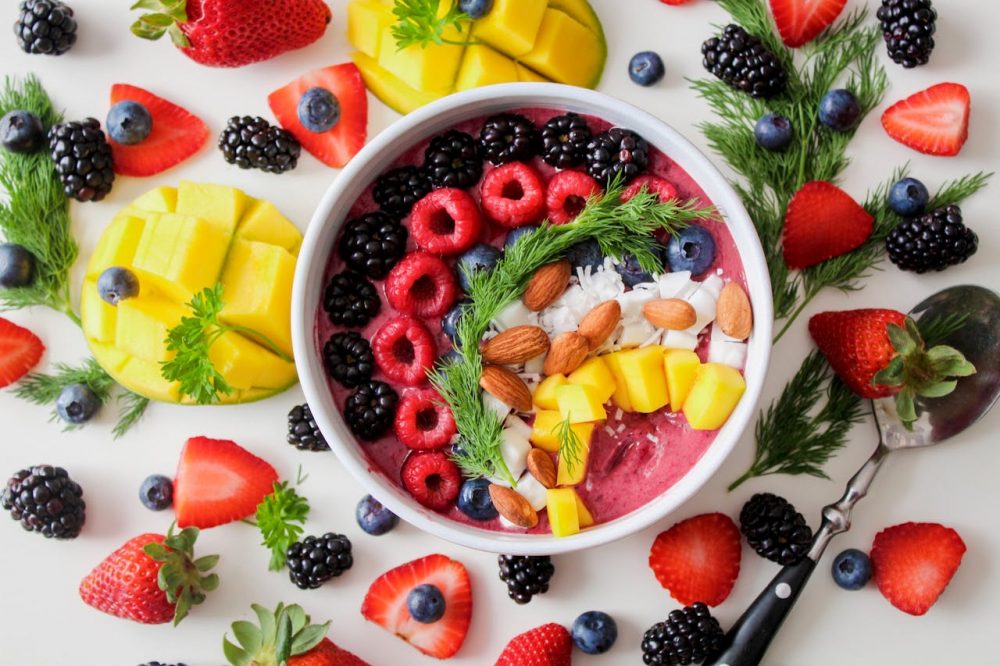
The introduction of new technology in the food industry is changing how food is produced and consumed. Innovations like lab-grown meats and AI-powered kitchens are addressing convenience and challenges in food sustainability and personalized nutrition.
1. Innovation in Food Technology
There is a growing number of innovative food technologies in the meat and protein foods sectors. Plant-protein foods are made from legumes and other plants such as beans, peas, and lentils. Companies like Beyond Meat and Impossible Foods are leading the charge in creating plant-protein alternatives for traditional meat products and are meeting the demand for vegetarian foods.
2. Precision Agriculture: Smart Farming for a Sustainable Future
Farmers are now focusing on cutting-edge technology to fine-tune how they use farming resources and maximize crop production. The use of drones, artificial intelligence, and real-time analytics provides focused assessments on the health of the soil, the crops, and how the prevailing weather patterns relate. This approach facilitates evidence-based decisions, optimally balances resource use, and mitigates impact on the environment.
3. Vertical Farming and Controlled Environment Agriculture
Urban development and the absence of large tracts of land to grow crops has led to vertical farming and controlled environment agriculture (CEA). These systems grow food indoors using hydroponics or aeroponics, where crops are grown in stacked layers and climates are controlled. These techniques minimize water consumption and the use of chemical pesticides, making urban food production more environmentally friendly.
4. 3D Food Printing: Customizing Nutrition and Reducing Waste
Customizable food design and individualized nutritional profiles can now be realized using 3D food printing, a new technology in the food industry. Printers can use pureed food to design meals with specific dietary requirements, such as low sodium, gluten-free, or other individualized health-focusing parameters. Food waste such as veggie peels can also be used in printing to help combat food insufficiency
5. Robots and AI in Food Prep and Food Service
Artificial intelligence and robotics are some of the latest technologies changing the way food is prepared and served. Some AI programs assess consumer preferences and dietary restrictions for intelligent meal suggestions. Robotics are also being adopted to automate time-consuming culinary tasks such as cutting ingredients, cooking food, and plating meals in restaurants. For example, Chipotle tested robotic systems such as the “Autocado” to automate avocado processing
6. Innovative Packaging and Food Waste Reduction
Waste-reducing packaging innovations are also important for the future of food. For example, edible packaging materials and biodegradable packing materials that minimize plastic waste are being developed. Other new food technologies such as shelf-life-extending and food freshness monitoring systems are helping to reduce food waste at the consumer and retail levels.
7. Personalized Nutrition: Diets Designed for You
Advancements in wearable health technology and genomics opened new possibilities in personalized nutrition. Diet plans tailored to an individual’s genetic profile and health data help optimize health. Instead of the current one-size-fits-all, the new model of nutrition will provide tailored guidance to an individual to meet their needs.
8. Cultivated Seafood: A Sustainable Alternative to Traditional Fishing
The FDA’s approval of lab-grown salmon is an important milestone in growing sustainable seafood. Seafood cultivated from growing fish cells in a sustainable closed system eliminates fishing and minimizes overfishing.
9. Insect-Based Foods: A Protein Source for the Future
Attention is turning to insect based foods as a source of sustainable protein. Insect production uses less resources and emits less greenhouse gases than traditional livestock. Products like insect flour, which is nutritious and eco-friendly, is being added to to bread and snacks as an alternative to conventional protein.
10. Artificial Intelligence in Flavor Development
The use of Artificial Intelligence in the development of innovative flavors and enrichment of taste is one of the latest advancements in the food industry. By evaluating vast arrays of flavor compounds and consumer preferences, and analyzing data, AI can predict and design new innovative flavor combinations and recreate traditional tastes of plant based food products to enhance their appeal to consumers.
The Conclusion
Technological advancements in the food industry focus on personalization, sustainability, and efficiency in food production. Innovations aimed at reducing the environmental impact of agriculture, like lab-grown meats, plant-based proteins, and insect-based foods, complement cost-saving measures. These alternatives conserve vital natural resources, lower greenhouse gas emissions, and relieve ecosystem strain. These benefits address climate change and resource scarcity. Personalization technology revolutionizes food and nutrition. Dietary tools that leverage genetic data, personal diet history, and health monitored in real-time to develop customized meal guides to fulfill one’s specific nutritional requirements. This technology improves health outcomes and resolves nutrition inequity. Instead of a universal approach, the meal guides would address specific health and dietary requirements. Avoiding the universalism of meals also contrasts the inequity underlying the personalization of food and meals. On the production side, efficiency is enhanced in food production with the advent of precision agriculture, vertical farming, AI preparation of foods, and 3D food printing. These advancements offer predictability, scalability, and integrated control of the food cycle. Collectively, the tools propose viable solutions to the challenges of hunger, health disparities, and climate change.
Implementing a technology-focused strategy can make food systems globally more resilient, fair, and more responsive to a growing population’s needs.





